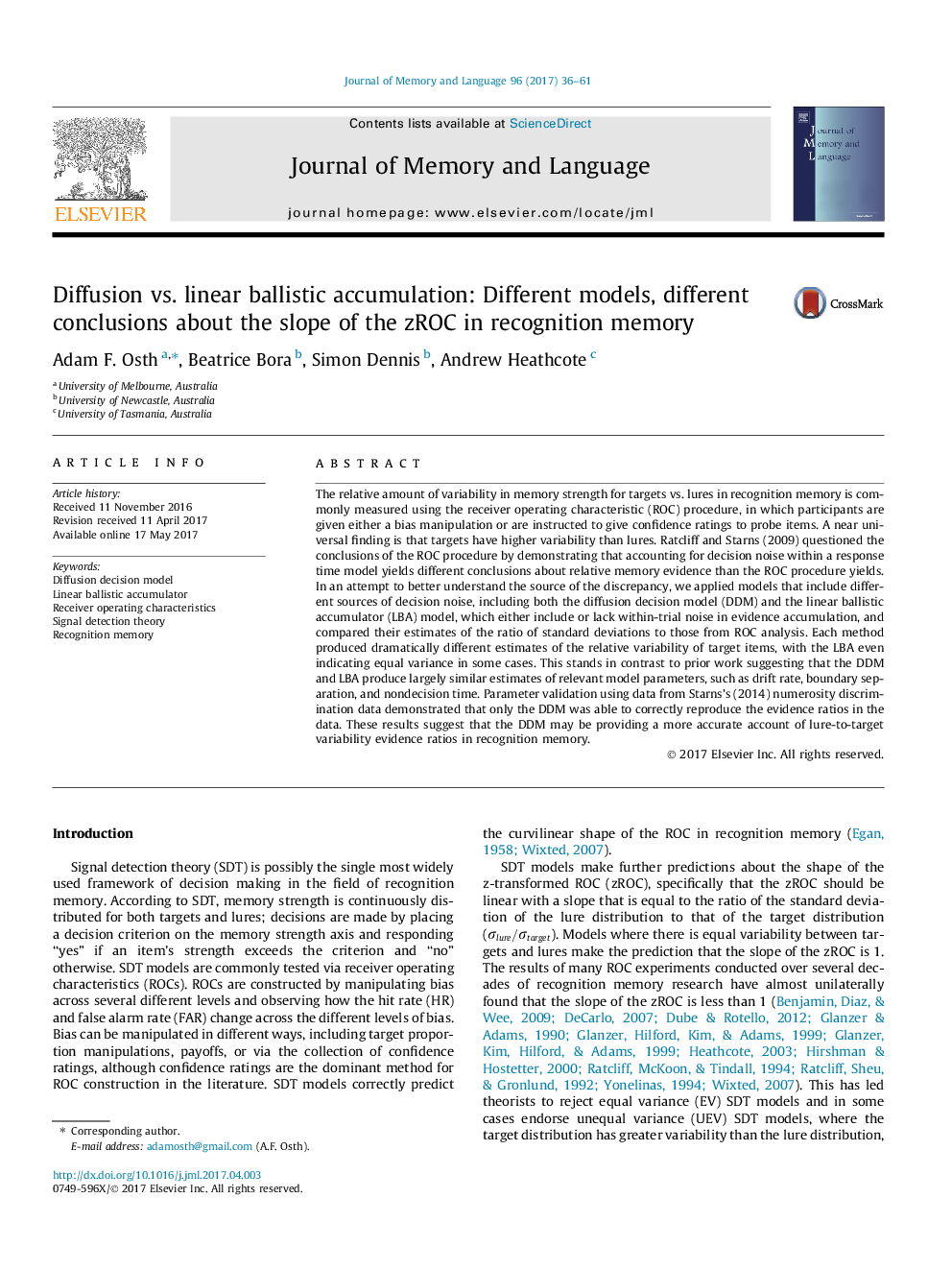| کد مقاله | کد نشریه | سال انتشار | مقاله انگلیسی | نسخه تمام متن |
|---|---|---|---|---|
| 5042558 | 1474623 | 2017 | 26 صفحه PDF | دانلود رایگان |

- DDM and LBA make different RT predictions for drift rate variability (sv).
- Both models estimated very different levels of target variability in recognition.
- Parameter validation indicated that the DDM better recovered the ratio of evidence variability.
The relative amount of variability in memory strength for targets vs. lures in recognition memory is commonly measured using the receiver operating characteristic (ROC) procedure, in which participants are given either a bias manipulation or are instructed to give confidence ratings to probe items. A near universal finding is that targets have higher variability than lures. Ratcliff and Starns (2009) questioned the conclusions of the ROC procedure by demonstrating that accounting for decision noise within a response time model yields different conclusions about relative memory evidence than the ROC procedure yields. In an attempt to better understand the source of the discrepancy, we applied models that include different sources of decision noise, including both the diffusion decision model (DDM) and the linear ballistic accumulator (LBA) model, which either include or lack within-trial noise in evidence accumulation, and compared their estimates of the ratio of standard deviations to those from ROC analysis. Each method produced dramatically different estimates of the relative variability of target items, with the LBA even indicating equal variance in some cases. This stands in contrast to prior work suggesting that the DDM and LBA produce largely similar estimates of relevant model parameters, such as drift rate, boundary separation, and nondecision time. Parameter validation using data from Starns's (2014) numerosity discrimination data demonstrated that only the DDM was able to correctly reproduce the evidence ratios in the data. These results suggest that the DDM may be providing a more accurate account of lure-to-target variability evidence ratios in recognition memory.
Journal: Journal of Memory and Language - Volume 96, October 2017, Pages 36-61